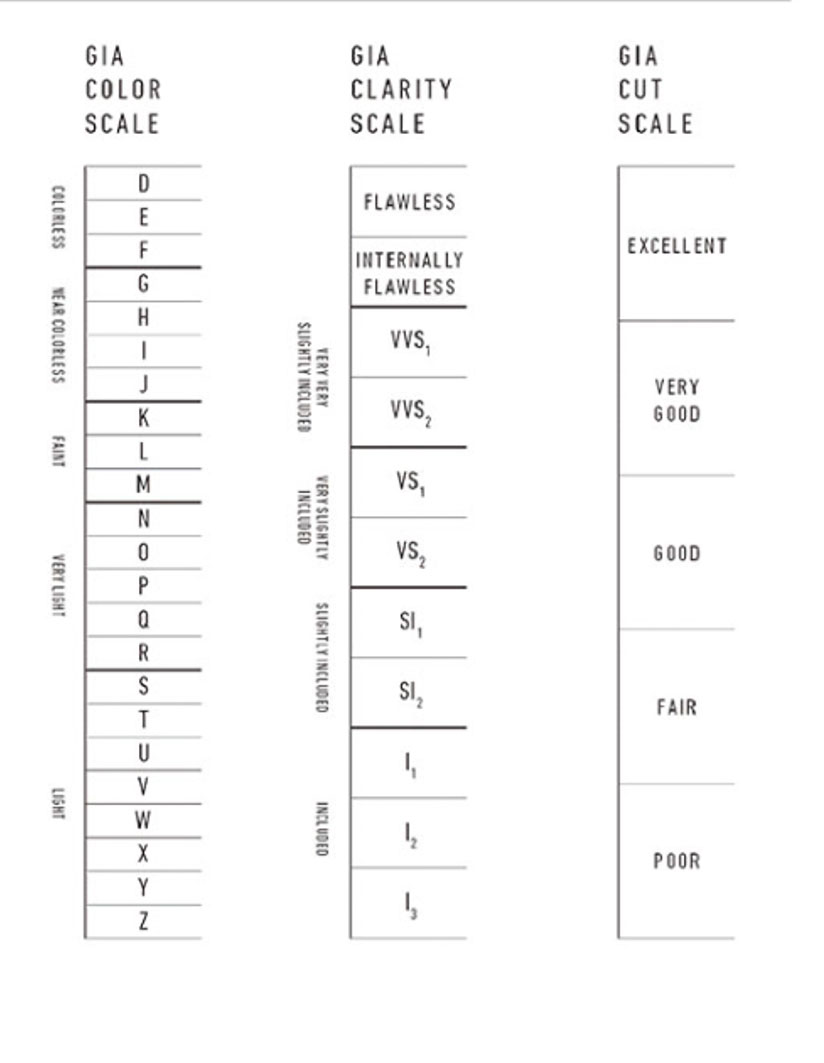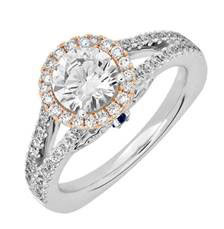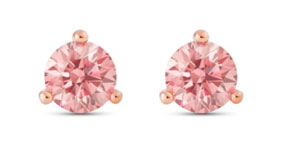Grading lab-made diamonds
 Lightbox, the DeBeers wing for lab-grown diamonds, began selling the gems a couple of years ago for super-low prices and without grading reports. They've now decided to grade their colorless diamonds.
Lightbox, the DeBeers wing for lab-grown diamonds, began selling the gems a couple of years ago for super-low prices and without grading reports. They've now decided to grade their colorless diamonds.
When Lightbox opened in 2018, its pricing was based solely on carat weight. It deliberately did not assign color and clarity grades to its diamonds because, as CEO Bruce Cleaver put it, "We don't think they deserve to be graded. They're all the same."
The company's decision has changed, probably due to consumer feedback and perhaps also industry buzz. "All the same" is not exactly a statement of quality.
As of this month, each white (that is, colorless) Lightbox diamond of 0.2 carats or more will receive a card describing it as "near colorless" or better, with clarity of VS or above, and cut at least "very good." The spec card, pictured above, shows how these grades compare with the letter grades GIA established for mined diamonds.
The "grades" are statements of the gems' minimum qualities. The stones are not individually graded, because Lightbox does not believe it's worth the extra cost to individually grade each stone.
"The manufacturing process makes the diamonds basically identical," explains Steve Coe of Lightbox. "There may be a slight difference between them, but we don't think it will add any greater value to put more information. They all cost the same amount of money to manufacture in the first place, so it doesn't make any sense to imply that one costs more to manufacture than another one."
According to Lightbox, stones that fail to meet the stated quality criteria are simply rejected and are not sold. (Probably they will be used for industrial purposes.)
Are the grades true?
Ordinarily, grading reports produced by the seller should not be taken at face value. But a GIA scientist examined a pair of Lightbox gems from a third-party vendor in 2019 (before Lightbox issued grading cards) and found them to be at the high end of the assigned ranges for color, clarity and cut.
GIA researchers say that 75% of the CVD-grown diamonds they encounter show evidence of post-growth HPHT (high pressure high temperature) treatment, an effective means of removing brownish tints from off-color diamonds. But a large amount of energy is needed to create sufficient heat and pressure, which can add significantly to the cost of production. The Lightbox diamonds show no evidence of HPHT treatment, meaning that Lightbox's diamond-growing technology is advanced enough to make color treatment unnecessary.
GIA's grading terminology
In adopting verbal descriptions, Lightbox is following GIA's practice. For mined diamonds GIA's lab reports use a letter-grade system, but for lab-made diamonds they rely on general descriptive terms.
GIA's Laboratory-Grown Diamond Report describes the diamond's color as colorless, near colorless, faint, very light and light. Clarity is described as flawless, internally flawless, very very slightly included, very slightly included, slightly included and included.
GIA's justification for using words rather than letter grades is that laboratory-grown diamonds do not have the same range of color as mined diamonds, so the precision of the D-Z letter grades is not needed.
Although several years ago it was difficult to produce colorless diamonds of high quality, today's grown diamonds are generally colorless or close to colorless, or they are treated post-growth (usually by HPHT) to make them so. GIA feels descriptive words provide more information to consumers.
GIA's reports on lab-grown diamonds carry the standard letter-grade scales for comparison. The reports also disclose if the gem has been color-treated. The price of GIA's laboratory-grown diamond report is the same as for its grading report on mined diamonds, and both reports can be verified through the lab's Report Check feature.
More on terminology & marketing
The FTC guidelines recently removed "synthetic" as a recommended qualifier for lab-made diamonds. This change came in response to complaints that consumers took the word to mean fake. GIA subsequently updated its lab reports to use the term "laboratory-made" rather than "synthetic."
A poll several years ago found that the terms "lab-made" and "lab-grown" didn't have wide consumer appeal because they made a romantic and timeless symbol sound cold and impersonal. A major marketing overhaul has happened since them.
Lab-made gems are now marketed as socially and ecologically responsible. Some companies emphasize their diamonds as grown. One company calls itself Pure Grown Diamonds. Others incorporate the manufacturer's name, such as Chatham Created Diamonds.
Lightbox officials make no bones about calling their diamonds manufactured products—deliberately distinguishing them from DeBeers' much more expensive mined diamonds.
FTC Guides require a lab-made diamond be accompanied by "clear and conspicuous" disclosure of its lab origin, suggesting terms such as laboratory-made, laboratory-grown, or man-made. The important thing is that the consumers be informed that the diamond is lab-made, not mined.
Colored Diamonds
Lightbox's colored diamonds, in pink and pale blue, do not come with the spec card for quality. Their lab-grown colored and white diamonds both sell for the same price, $800 per carat.
FOR AGENTS & UNDERWRITERS
GIA had been offering Synthetic Diamond Reports for more than a decade, but in 2018 it changed the name to Laboratory-Grown Diamond Report. Many consumers will have these older reports, so insurers should be aware that synthetic means lab-made, and both terms signify a genuine diamond (not imitation).
All scheduled jewelry should have a detailed descriptive appraisal, even if there is a diamond report, because the jewelry should also be described. Also, an appraisal will confirm that the lab report matches the diamond in the jewelry being insured.
The appraisal should be from a reliable gemologist appraiser who is independent of the seller. Recommend a trained and qualified gemologist (GG, FGA+, or equivalent), preferably one who has additional insurance appraisal training. One course offering such additional training is the Certified Insurance Appraiser™ (CIA) course of the Jewelry Insurance Appraisal Institute.
The best appraisal includes the JISO 78/79 appraisal form. This form complies with all the recommendations of the FTC Guides.
Value is determined, ultimately, by the market. New technologies and an increasing number of diamond producers mean more competition, which can put the pricing of both lab-made and mined diamonds in flux.
In colored diamonds, the valuation difference between mined and lab-grown can be enormous. If a gem is being insured as mined, it is vital to be sure it is not lab-grown.
FOR ADJUSTERS
Mined and lab-made diamonds are both real diamond, but they differ widely in price. If an appraisal does not state whether the stone is mined or lab-grown—or if appraisals or other documents have unfamiliar terms or brand names—it's worth checking the internet. Reputable diamond-growers and retailers of lab-grown diamonds are proud of their products and have websites with a wealth of information about their products and processes.
Whether through ignorance, carelessness or deliberate fraud, information about gem treatments is often lacking on appraisals. All information about the jewelry's quality affects its value.
When a replacement is needed, it can be useful to consult a trained gemologist appraiser (GG or FGA+), who can compare documents from the replacement source with appraisal documents on file to be sure the replacement jewelry is appropriate to make the insured whole.
©2000-2025, JCRS Inland Marine Solutions, Inc. All Rights Reserved. www.jcrs.com




